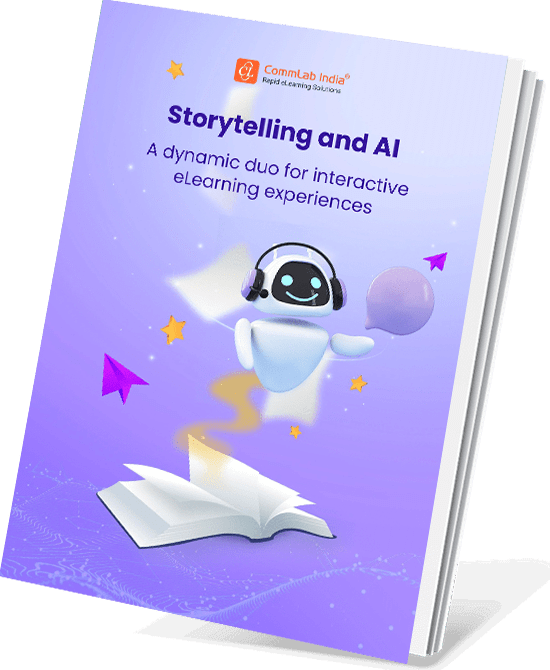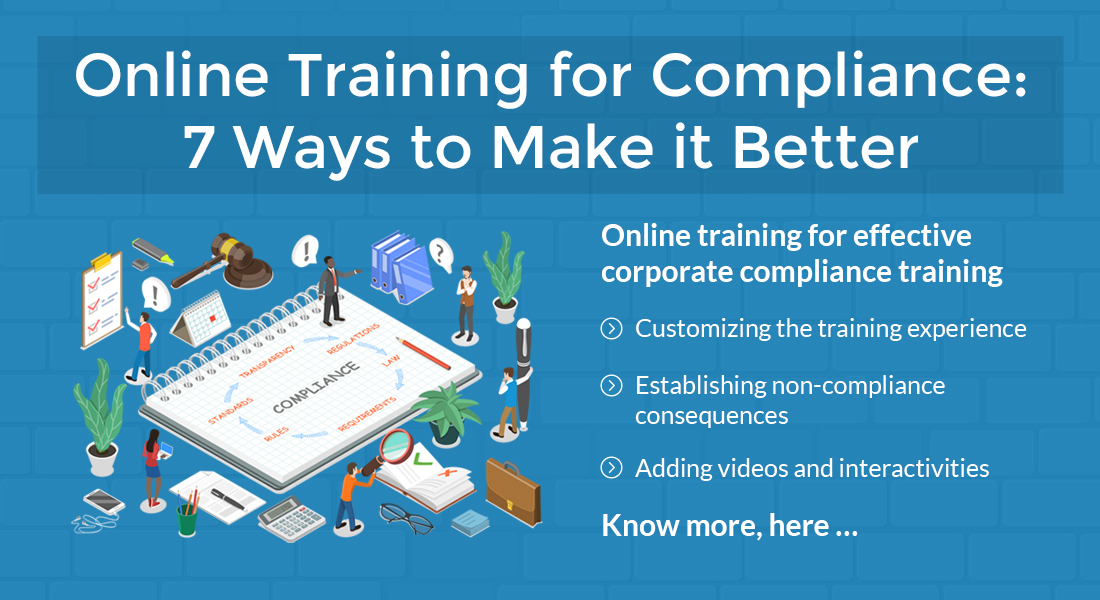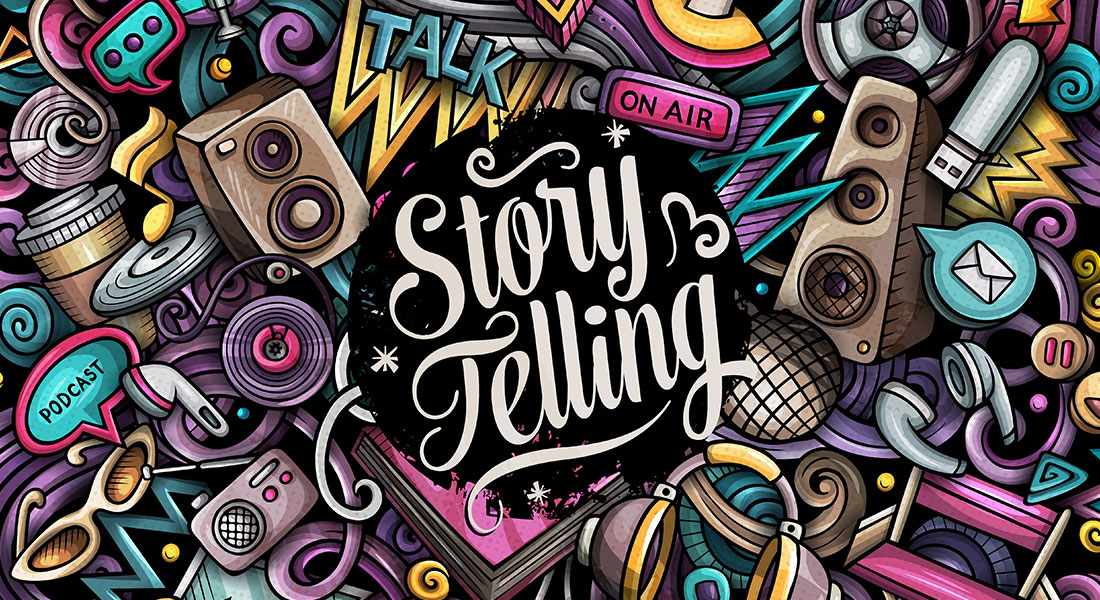Using Story Design for Impactful Training— Podcast Excerpt

Who doesn’t love a good story? Whether you’re a kid staying up late to hear one more bedtime tale or an adult binge-watching your favorite series, stories have a way of captivating us. According to Harvard Business Review, human brains are wired to respond to storytelling. They stick with us because they grab our emotions, spark actions, and stay in our memories.
→ Download eBook: The Magic of Storytelling Powered by AI
In this excerpt from CommLab India’s eLearning Champion podcast, we delve into the topic of instructional story design methodology. We’re joined by Rance Greene, the Director of Learning & Development and Strategic Storytelling at the School of Story Design.
Tune in to the podcast for interesting and actionable insights!
What is Instructional Story Design Methodology?
Instructional story design is a methodology for writing and developing stories specifically for training purposes. It leverages the power of storytelling to engage and connect with people while providing a structured approach to creating compelling and effective training narratives.

How to Create a Compelling Story for Corporate Training?
Effective storytelling in corporate training has two key ingredients: relatable characters and strong conflicts.
These elements captivate learners by sparking their curiosity and driving a desire for resolution, ensuring the story resonates and holds their attention.
Relatable Characters
The characters in your story should feel real and relevant to your audience. They could represent a peer, a mentor, or even the learner themselves. Their experiences, challenges, and motivations should align with the audience’s own experiences or aspirations. For example, if you’re training a sales team, the character could be a salesperson striving to close a challenging deal. Relatable characters help the audience connect emotionally with the story, making the lessons more impactful and memorable.
Strong Conflicts
Conflict is what drives a compelling story. It introduces challenges, obstacles, or dilemmas that the characters must overcome. In the context of training, these conflicts should mirror real-world problems the audience might face. For instance, a story could depict a customer service representative handling a difficult customer or a team grappling with a tight project deadline. Strong conflicts not only make the story engaging but also set up opportunities to demonstrate problem-solving, decision-making, and other key skills the training aims to develop.

What's the Difference between Storytelling and Scenario-Based Learning?
Storytelling in training and scenario-based learning serve different purposes and require distinct approaches.
Scenario-based learning focuses on presenting learners with decision points within a structured storyline. Learners are given short stories that branch out based on their choices, leading to different outcomes. This method emphasizes decision-making and problem-solving but can sometimes lack conflict if learners consistently make correct choices.
Storytelling, on the other hand, is a foundational skill that underpins scenario-based learning. Strong storytelling ensures engaging narratives, compelling characters, and meaningful conflict, which are essential for holding the learner's attention. Storytelling in training provides the depth and emotional investment needed to make scenarios more impactful, especially when standalone scenarios involve new characters with each interaction.

Storytelling and AI: A Dynamic Duo for Interactive eLearning Experiences
Leverage AI and Storytelling to Create Magic in eLearning!
- The Potential of Storytelling in eLearning
- Tips for Crafting Compelling Stories
- AI in Storytelling
- And More!
What Happens When Compliance Training Becomes a Relatable Story?
A company facing sensitive compliance issues, such as favoritism, addressed these challenges using a storytelling approach. Instead of delivering a traditional reprimanding session, a fictional story was created, set in a coffee shop where employees dealt with similar challenges like favoritism and fairness. This method allowed participants to address real-life issues indirectly, fostering understanding and collaboration.
Over time, the storytelling approach proved highly effective. Employees began referencing the story to address old habits, creating a lasting impact on behavior and mindset. Compliance training, once seen as a burden, became an engaging and valued part of company culture. Surveys revealed a shift where compliance and ethics became core values, with employees regularly discussing the story's characters and lessons.
This highlights how storytelling can transform compliance training, driving meaningful cultural change and embedding ethics into daily operations. It demonstrates the potential of storytelling as an innovative and impactful tool for addressing workplace challenges.
Bringing It All Together
Storytelling in corporate training isn’t just a buzzword; it’s a game-changer. It connects learners emotionally, simplifies complex concepts, and drives engagement like nothing else. When you pair that with today’s AI revolution, the possibilities become endless. AI is absolutely everywhere and yes, even transforming how we craft and deliver stories in corporate training. Curious to know how storytelling and AI make the perfect match? Check out our eBook to explore how the future of corporate learning is evolving at the intersection of creativity and technology!





